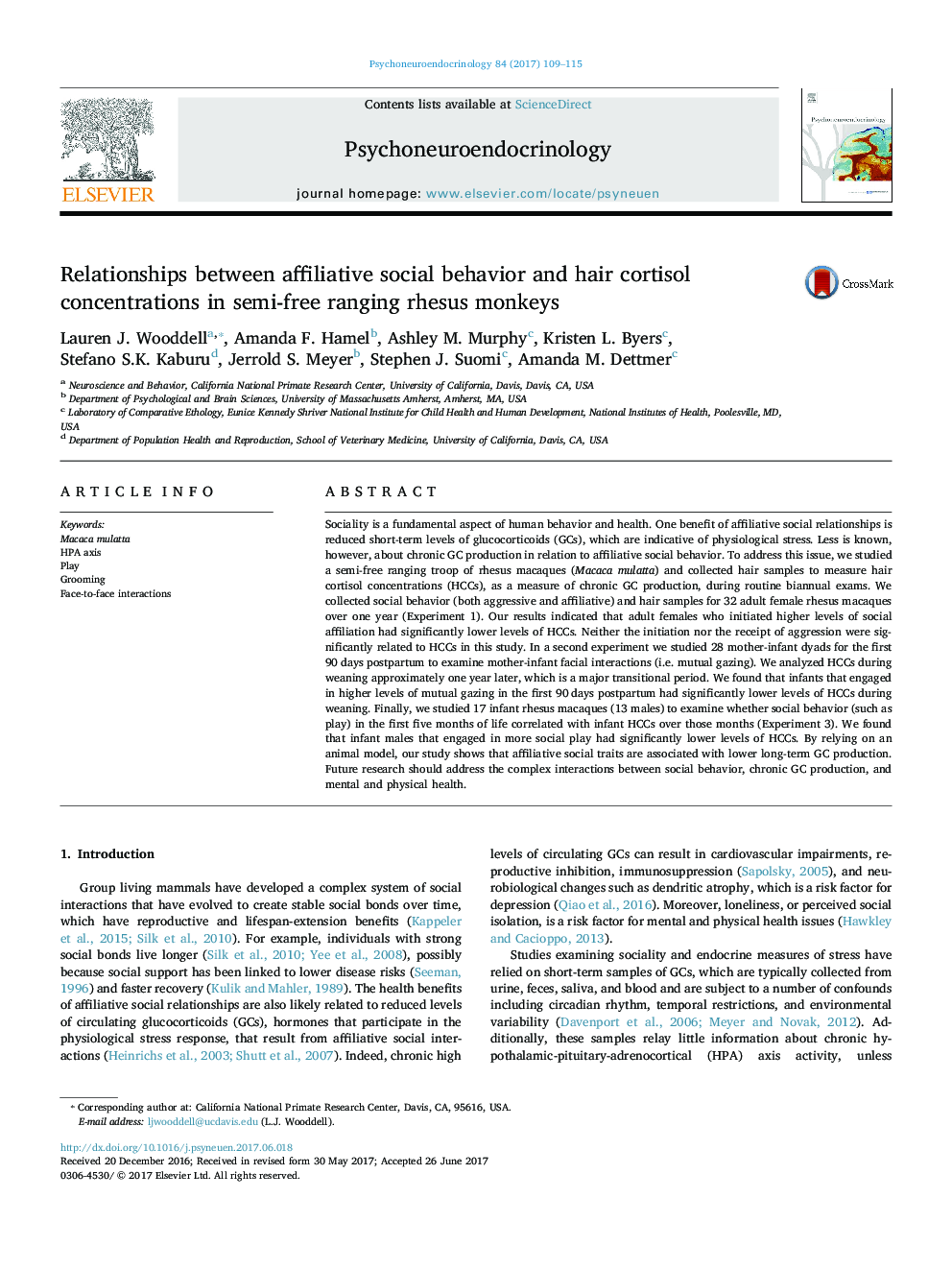| کد مقاله | کد نشریه | سال انتشار | مقاله انگلیسی | نسخه تمام متن |
|---|---|---|---|---|
| 4934223 | 1433959 | 2017 | 7 صفحه PDF | دانلود رایگان |
عنوان انگلیسی مقاله ISI
Relationships between affiliative social behavior and hair cortisol concentrations in semi-free ranging rhesus monkeys
ترجمه فارسی عنوان
ارتباط رفتار رفتاری اجتماعی و غلظت کورتیزول موی در میمونهای مقعدی نیمه آزاد
دانلود مقاله + سفارش ترجمه
دانلود مقاله ISI انگلیسی
رایگان برای ایرانیان
کلمات کلیدی
موضوعات مرتبط
علوم زیستی و بیوفناوری
بیوشیمی، ژنتیک و زیست شناسی مولکولی
علوم غدد
چکیده انگلیسی
Sociality is a fundamental aspect of human behavior and health. One benefit of affiliative social relationships is reduced short-term levels of glucocorticoids (GCs), which are indicative of physiological stress. Less is known, however, about chronic GC production in relation to affiliative social behavior. To address this issue, we studied a semi-free ranging troop of rhesus macaques (Macaca mulatta) and collected hair samples to measure hair cortisol concentrations (HCCs), as a measure of chronic GC production, during routine biannual exams. We collected social behavior (both aggressive and affiliative) and hair samples for 32 adult female rhesus macaques over one year (Experiment 1). Our results indicated that adult females who initiated higher levels of social affiliation had significantly lower levels of HCCs. Neither the initiation nor the receipt of aggression were significantly related to HCCs in this study. In a second experiment we studied 28 mother-infant dyads for the first 90Â days postpartum to examine mother-infant facial interactions (i.e. mutual gazing). We analyzed HCCs during weaning approximately one year later, which is a major transitional period. We found that infants that engaged in higher levels of mutual gazing in the first 90Â days postpartum had significantly lower levels of HCCs during weaning. Finally, we studied 17 infant rhesus macaques (13 males) to examine whether social behavior (such as play) in the first five months of life correlated with infant HCCs over those months (Experiment 3). We found that infant males that engaged in more social play had significantly lower levels of HCCs. By relying on an animal model, our study shows that affiliative social traits are associated with lower long-term GC production. Future research should address the complex interactions between social behavior, chronic GC production, and mental and physical health.
ناشر
Database: Elsevier - ScienceDirect (ساینس دایرکت)
Journal: Psychoneuroendocrinology - Volume 84, October 2017, Pages 109-115
Journal: Psychoneuroendocrinology - Volume 84, October 2017, Pages 109-115
نویسندگان
Lauren J. Wooddell, Amanda F. Hamel, Ashley M. Murphy, Kristen L. Byers, Stefano S.K. Kaburu, Jerrold S. Meyer, Stephen J. Suomi, Amanda M. Dettmer,
